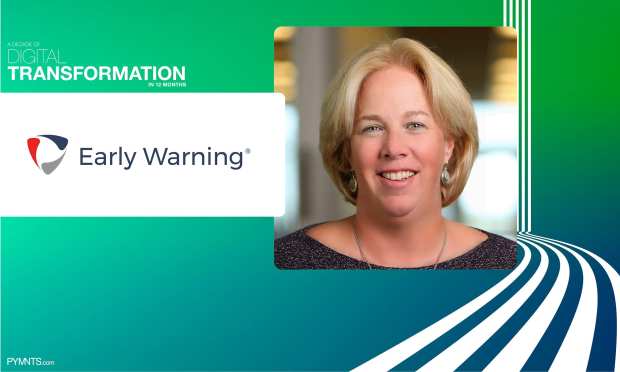Customer Relationships At The Center Of Financial Services Transformation

In A Decade of Digital Transformation in 12 Months, 46 C-suite executives spoke with PYMNTS for its Q2 eBook on what the world will look like as recovery rolls on and the next iteration of normal rolls out. In this excerpt, Donna Turner, COO of Early Warning, explains why customer service means everything, especially in a time of deep uncertainty.
Read the entire eBook here.
Digital transformation within financial services has traditionally moved slower than other industries, considering the requirements to combat fraud and risk and meet regulatory demands. However, everything changed in 2020 when the global pandemic hit. With bank branches closing, consumers needed to increasingly rely on digital channels to open checking accounts, apply for loans, deposit funds and transfer money to friends and family – and financial institutions (FIs) have needed to pivot quickly to meet these new expectations, all while continuing to manage fraud and risk.
A People-First Approach
Customer service means everything, especially in a time of deep uncertainty. Consumers who were accustomed to going to their local bank branch or credit union to engage with their favorite tellers no longer had that option. FIs constantly need to ask themselves: “How can I drive a better relationship with my customers? How do I go above and beyond the basics and differentiate from all the other banks and credit unions out there? What can I offer to drive more frequency of engagement? How do I give my customers the same personal attention they receive when they are at the branch?”
It all begins at the virtual front door with the customer onboarding experience. When a customer chooses to open a new account, that very first touchpoint is critical. That is when you “meet” your new customer. If there are too many complicated steps or questions during the online application process, there’s a chance you may lose a customer.
Recent research from The Financial Brand’s Digital Banking Report found that unless a financial institution can open a new account or complete a new loan application in less than five minutes, the potential for the customer to abandon the account opening increases to 60 percent or more. Alternatively, faster account openings reduce abandonment rates to almost 25 percent or less, which is a much better starting point from which to address other elements of friction and risk.
Digital Payments On The Rise
A fast, frictionless digital onboarding experience isn’t the only thing banking customers are seeking. Hygiene and safety have been at the top of everyone’s minds during this pandemic. As a result, the use of paper-based payment methods, such as cash and checks, diminished. Person-to-person (P2P) payments are not just millennial territory anymore. People of all ages have started to depend more on digital payments to get money to loved ones in need or to pay their rent. Many older adults started to experiment with P2P for the very first time during the pandemic – to send money to a granddaughter for the graduation ceremony that they couldn’t attend or to pay back their neighbor for doing a grocery run.
Ultimately, the digital transformation of the financial services industry paved the way for a significant cultural shift. Consumers have drastically changed their banking habits since the pandemic began – and many of these changes are here to stay.
